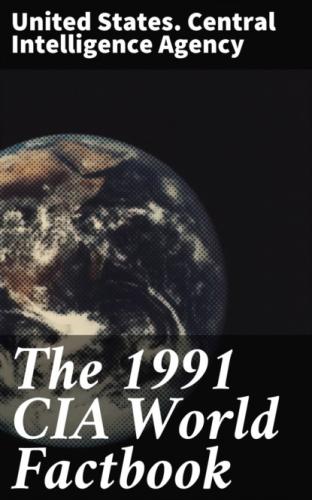Territorial sea: 12 nm
_#_Disputes: Libya claims about 19,400 km2 in southeastern Algeria
_#_Climate: arid to semiarid; mild, wet winters with hot, dry summers along coast; drier with cold winters and hot summers on high plateau; sirocco is a hot, dust/sand-laden wind especially common in summer
_#_Terrain: mostly high plateau and desert; some mountains; narrow, discontinuous coastal plain
_#_Natural resources: crude oil, natural gas, iron ore, phosphates, uranium, lead, zinc
_#_Land use: arable land 3%; permanent crops NEGL%; meadows and pastures 13%; forest and woodland 2%; other 82%; includes irrigated NEGL%
_#_Environment: mountainous areas subject to severe earthquakes; desertification
_#_Note: second-largest country in Africa (after Sudan)
_*People #_Population: 26,022,188 (July 1991), growth rate 2.5% (1991)
_#_Birth rate: 32 births/1,000 population (1991)
_#_Death rate: 7 deaths/1,000 population (1991)
_#_Net migration rate: 0 migrants/1,000 population (1991)
_#_Infant mortality rate: 57 deaths/1,000 live births (1991)
_#_Life expectancy at birth: 66 years male, 68 years female (1991)
_#_Total fertility rate: 4.2 children born/woman (1991)
_#_Nationality: noun—Algerian(s); adjective—Algerian
_#_Ethnic divisions: Arab-Berber 99%, European less than 1%
_#_Religion: Sunni Muslim (state religion) 99%, Christian and Jewish 1%
_#_Language: Arabic (official), French, Berber dialects
_#_Literacy: 50% (male 63%, female 36%) age 15 and over can read and write (1987)
_#_Labor force: 3,700,000; industry and commerce 40%, agriculture 24%, government 17%, services 10% (1984)
_#_Organized labor: 16–19% of labor force claimed; General Union of Algerian Workers (UGTA) is the only labor organization and is subordinate to the National Liberation Front
_*Government #_Long-form name: Democratic and Popular Republic of Algeria
_#_Type: republic
_#_Capital: Algiers
_#_Administrative divisions: 48 provinces (wilayat, singular—wilaya);
Adrar, Ain Defla, Ain Temouchent, Alger, Annaba, Batna, Bechar,
Bejaia, Biskra, Blida, Bordj Bou Arreridj, Bouira, Boumerdes, Chlef,
Constantine, Djelfa, El Bayadh, El Oued, El Tarf, Ghardaia, Guelma,
Illizi, Jijel, Khenchela, Laghouat, Mascara, Medea, Mila, Mostaganem,
M'sila, Naama, Oran, Ouargla, Oum el Bouaghi, Relizane, Saida, Setif,
Sidi Bel Abbes, Skikda, Souk Ahras, Tamanghasset, Tebessa, Tiaret,
Tindouf, Tipaza, Tissemsilt, Tizi Ouzou, Tlemcen
_#_Independence: 5 July 1962 (from France)
_#_Constitution: 19 November 1976, effective 22 November 1976
_#_Legal system: socialist, based on French and Islamic law; judicial review of legislative acts in ad hoc Constitutional Council composed of various public officials, including several Supreme Court justices; has not accepted compulsory ICJ jurisdiction
_#_National holiday: Anniversary of the Revolution, 1 November (1954)
_#_Executive branch: president, prime minister, Council of Ministers (cabinet)
_#_Legislative branch: unicameral National People's Assembly (Al-Majlis Ech-Chaabi Al-Watani)
_#_Judicial branch: Supreme Court (Cour Supreme)
_#_Leaders:
Chief of State—President Chadli BENDJEDID (since 7 February 1979);
Head of Government—Prime Minister Sid Ahmed GHOZALI (since 6 June 1991)
_#_Political parties and leaders: National Liberation Front (FLN), Chadli BENDJEDID, president; Islamic Salvation Front (FIS), Abassi MADANI; the government established a multiparty system in September 1989 and as of 31 December 1990 over 30 legal parties existed
_#_Suffrage: universal at age 18
_#_Elections:
President—last held on 22 December 1988 (next to be held December 1993); results—President BENDJEDID was reelected without opposition;
National People's Assembly—last held on 26 February 1987 (next were to be held 27 June 1991 but postponed indefinitely because of civil unrest); results—FLN was the only party; seats—(281 total) FLN 281; note—the government held multiparty elections (municipal and wilaya) in June 1990, the first in Algerian history; results—FIS 55%, FLN 27.5%, other 17.5%, with 65% of the voters participating
_#_Communists: 400 (est.); Communist party banned 1962
_#_Member of: ABEDA, AfDB, AFESD, AL, AMF, AMU, CCC, ECA, FAO, G-19, G-24, G-77, IAEA, IBRD, ICAO, IDA, IDB, IFAD, ILO, IMF, IMO, INMARSAT, INTELSAT, INTERPOL, IOC, ISO, ITU, LORCS, NAM, OAPEC, OAS (observer), OAU, OIC, OPEC, UN, UNAVEM, UNCTAD, UNESCO, UNHCR, UNIDO, UPU, WCL, WHO, WIPO, WMO, WTO
_#_Diplomatic representation: Ambassador Abderrahmane BENSID; Chancery at 2118 Kalorama Road NW, Washington DC 20008; telephone (202) 328–5300;
US—Ambassador Christopher W. S. ROSS; Embassy at 4 Chemin Cheich
Bachir El-Ibrahimi, Algiers (mailing address is B. P. Box 549,
Alger-Gare, 16000 Algiers); telephone [213] (2) 601–425 or 255, 186;
there is a US Consulate in Oran
_#_Flag: two equal vertical bands of green (hoist side) and white with a red five-pointed star within a red crescent; the crescent, star, and color green are traditional symbols of Islam (the state religion)
_*Economy #_Overview: The exploitation of oil and natural gas products forms the backbone of the economy. Algeria depends on hydrocarbons for nearly all of its export receipts, about 30% of government revenues, and nearly 25% of GDP. In 1973–74 the sharp increase in oil prices led to a booming economy and helped to finance an ambitious program of industrialization. Plunging oil and gas prices, combined with the mismanagement of Algeria's highly centralized economy, have brought the nation to its most serious social and economic crisis since independence. The government has promised far-reaching reforms, including giving public-sector companies more autonomy, encouraging private-sector activity, boosting gas and nonhydrocarbon exports, and proposing a major overhaul of the banking and financial systems, but to date has made little progress.
_#_GDP: $54 billion, per capita $2,130; real growth rate 2.5% (1990 est.)
_#_Inflation rate (consumer prices): 16.6% (1990)
_#_Unemployment rate: 26% (1990 est.)
_#_Budget: revenues $16.7 billion; expenditures $17.3 billion, including capital expenditures of $6.6 billion (1990 est.)
_#_Exports: $10.2 billion (f.o.b., 1990 est.);
commodities—petroleum and natural gas 98%;
partners—Netherlands, Czechoslovakia, Romania, Italy, France, US
_#_Imports: $9.2 billion (f.o.b., 1990 est.);
commodities—capital goods 29%, consumer goods 30%;
partners—France 25%, Italy 8%, FRG 8%, US 6–7%
_#_External debt: $26.6 billion (December 1990)
_#_Industrial production: growth rate −3% (1989 est.); accounts for 30% of GDP, including petroleum
_#_Electricity: 5,156,000 kW capacity; 14,900
